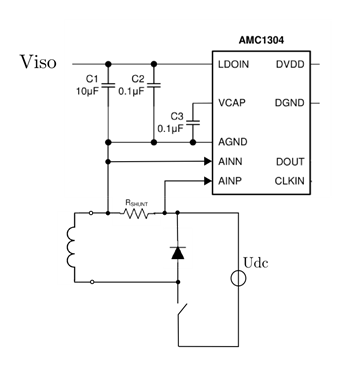Other Parts Discussed in Thread: AMC1301, , OPA376
Hello everybody,
I'm planning to use the AMC1304M25 or AMC1301 for a isolated shunt-current measurement on the high-side.
In my application, the current to be measured is only positive. Since the above devices have a differential input range of +-250mV, I was wondering if there is any way to modify the circuitry in order to have the range 0--250mV as linear full scale range for the digital conversion. Otherwise, I would be losing half of the measuring range.
I would appreciate your thoughts on this.
Thank you,
Sebastian



